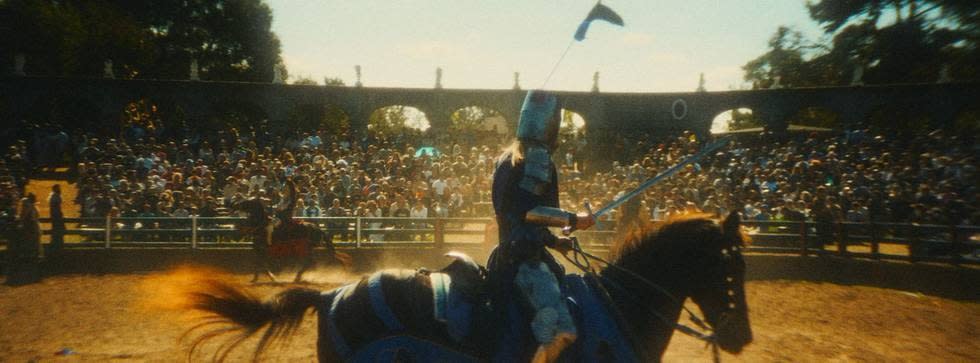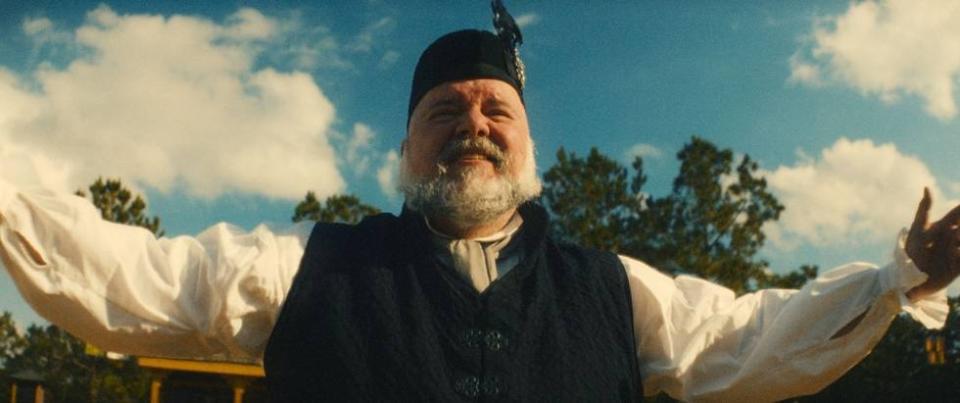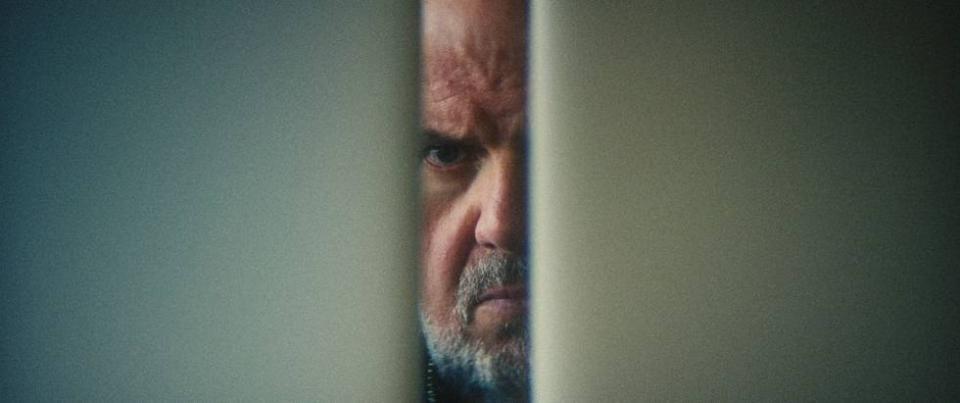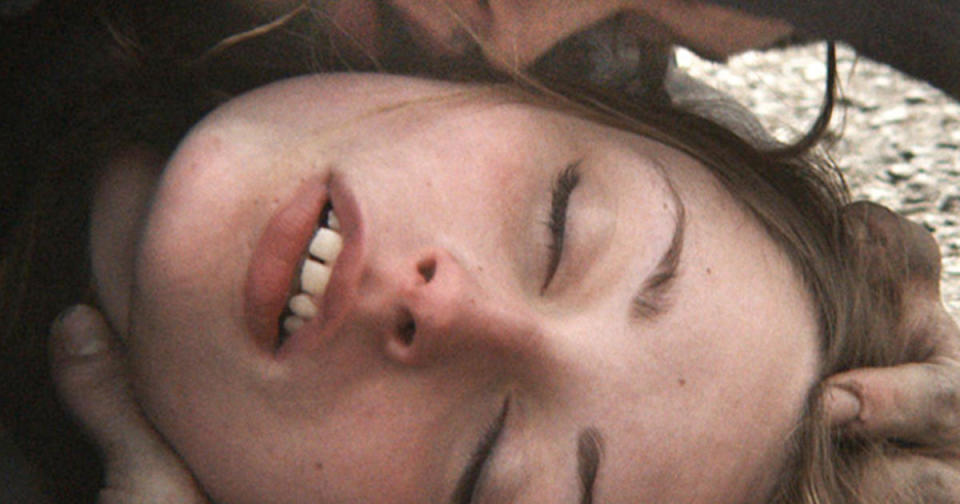‘Ren Faire’: 5 Things to Know About How the Docu-Fantasy Series Was Made, ‘Succession’-Level Drama and All

HBO Documentary’s new three-part series does not look, feel, or sound like any docuseries you’ve seen. Set against the backdrop of one of the world’s largest Renaissance fairs in Todd Mission, Texas, “Ren Faire” director Lance Oppenheim blends verite filmmaking with fantasy in capturing a cast of characters who are playing out a real-life succession drama.
At the center is King George Coulum, the 86-year-old visionary who built the festival and ruled his fiefdom with an iron fist as it exploded into a multi-million dollar business and (a la Disneyland) became its own town, for which Coulum is both the mayor and primary employer. In Episode 1, the King indicates he is finally ready to step aside, as he hits various online dating sites (including sugardaddy.com) looking for a pretty young woman to be his companion in his final years, which he envisions being filled with sex, art, and gardening.
More from IndieWire
The characters in “Ren Faire” are not only Shakespearean, they see themselves as such. Existing in a world of fantasy cosplay, they are performers by nature, making them the perfect subjects for Oppenheim, a nonfiction director who brings narrative filmmaking devices to his documentaries (“Spermworld,” “Some Kind of Heaven”).
Whereas “Succession” adopted the free-form handheld nature of a multi-camera documentary, Oppenheim is reaching for something grander (“operatic” and “docu-fantasy” are the words the director uses to describe the series) while working on a far smaller scale.

“When you watch something like ‘Vanderpump Rules,’ which is also sort of a succession story, and then you watch something that’s like “There Will Be Blood” [a direct influence on how Oppenheim approached Episode 3], I was like, how can I take both of those things that I love so much?,” said Oppenheim. “How can I basically put them in a blending machine and create its own discreet, unique experience where it’s not reality TV, it’s not a Paul Thomas Anderson movie, it’s somewhere in between, and that hopefully acknowledges that we are in this fantastical space and world.”
IndieWire interviewed Oppenheim to find out how exactly he did pull this off, digging into backstory of the project’s origins, his unique process, collaboration with his subjects, cinematography, and how he found kindred filmmaking spirits in his producing partners (the Safdie Brothers’ production company Elara Pictures).
Timeline
The Texas Renaissance Festival takes place over eight weekends from November to January every year in the town of Todd Mission. “Ren Faire” filmed during three fests: The start of the 2021 season, the entire 2022 season, and the end of the 2023 season. In total, the series shot for approximately 100 days.
The Journalists
For his previous nonfiction projects, Oppenheim has started with the setting and then found people in the setting, explaining, “I try to locate some sort of internal or external conflict that I can trace.” “Ren Faire,” though, was a very different project, in part because it came to Oppenheim from two journalists, David Gauvey Herbert (executive producer) and researcher Abigail Rowe (co-executive producer).
“David writes these amazing long-form journalism pieces that remind me of what I love in David Foster Wallace’s nonfiction, it feels like a novelist’s take on a nonfiction story,” said Oppenheim. “And he’s attracted to things that I am, which is people obsessed with control and creating a world for themselves.”
Herbert and Rowe sent Oppenheim a one-page pitch about Coulum, and the festival he built and rules. The two journalists would continue to report the story, but believed the project would make for a better TV series and were looking for a partner. Oppenheim had worked with journalists before — his last film “Spermworld” originated from a New York Times piece — but nothing like this.
“Abby and Dave were basically there with me,” said Oppenheim. “While I was shooting something, they’d be on their own uncovering something for me to shoot next.”
This created situations where the filmmaking team was often ahead of its subjects. In the conclusion of Episode 1, while Oppenheim was in Germany filming the festival’s general manager Jeff Baldwin — who is led to believe he will run the festival as the King starts to step aside — Herbert and Rowe let Oppenheim know Coulum was meeting with the festival’s kettle-corn vendor Louie Migliaccio, who had raised money to buy the festival. Oppenheim was even prepared for Jeff to get the phone call that would send him reeling at the end of the episode.
The Filmmaking Approach (Jeff’s Ego Death)

Oppenheim referred to the moment Jeff received word Louie was buying the festival as his “ego death,” the demise of his sense of self after 43 years of loyal service. It’s a moment Oppenheim captured with a bold use of camera, light, sound, and editing, placing the viewer in Jeff’s subjectivity. Reeling, as he walks through a German festival at night, sounds echoing in his head, the German Renaissance actors calling “Jeff” into the camera, the fractured use of editing and colored light captures a sense of disorientation. It’s a scene that is a perfect distillation of Oppenheim’s approach.
“The emotions he experienced were real, that’s what I’m trying to adhere to,” said Oppenheim. “It’s not just an emotional truth, it’s an emotional experience that I think just simply observing a situation could never give you. You have to occupy it, inhabit it with that person.”
To accomplish this, Oppenheim doesn’t hide that there are elements of performance here, especially with Jeff, who started his career as an actor and for years was the entertainment director/ringleader of the play-acting and dramatic reenactments that make the festival a fantastical time warp.
“I’m making a film with performers, they’re compulsively performing, even when the cameras aren’t there, they’re performing as a day job,” said Oppenheim. “I’m always interested in this sort of mode of embracing the artifice and riffing off of reality, and hopefully breaking through the artifice to find something even realer and more painful, or more comedic, or more expressive on the other side of it.”
The key building block for Oppenheim is the interview, where subjects first express what they want, think, fear, and feel.
“To me it’s really important to start [with] how someone’s feeling, in their own words, what they’re going through. And then the next day hopefully there will be active ideas that haven’t happened yet that they’re planning,” said Oppenheim. “I try and take ideas that come from a confessional interview and find ways to collaborate with the people to dramatize those things.”
Oppenheim’s collaboration with his doc subjects involves some light direction, referencing emotions they’ve described (“You remember you said that thing over there, I want to find a way to get that in here now”). There’s a fluidity to the conversation while filming, as the subject, camera operator, and director try to naturally find ways to express something, ideally as an event unfolds. In the case of of Jeff’s ego death, prior to the phone call, he has been invigorated walking through the German festival, as he searched for ideas he can bring back to King Coulum’s Texas cash cow. The gut punch of the phone call provided a different emotional view of the fest, and supplied the perfect cinematic vehicle.

“All the things that felt really fun and awesome and exciting about that German voyage suddenly closed in on him, it entombed him,” said Oppenheim. “You know it couldn’t be real, in the sense that people are shouting ‘Jeff’ at the camera, but in a way that is exactly what he felt. He was in a foreign country, totally out of sorts, ‘What is going on? Am I going to lose my job? I’m freaking out. Oh, my God. Oh, my God. I just got to get out of here.’”
The Cinematography
Oppenheim first worked with “Ren Faire” cinematographer Nate Hurtsellers on a short “The Happiest Guy in the World,” a film about Mario Salcedo, a guy who abandoned his prior life and decided to live on a cruise ship for 20 years.
“Nate really taught me on that project to really push this idea of how you can you enter the headspace of the person that is living that way,” said Oppenheim. “Looking for clues from the setting, how everything was controlled by this one man, every conversation, and so then we landed on the idea, ‘Well, let’s glide with him,’ because that seems like the way he moves.”
Oppenheim wanted to carry some of that gliding camera over to “Ren Faire.” He didn’t want the camera to ever feel like it was gawking at the cosplay, but rather gliding through the space, as if the viewer is an un-costumed patron.
Oppenheim was also looking at films like Ridley Scott’s “Kingdom of Heaven” and Stanley Kubrick’s “Barry Lyndon.” “There are these movies that are different versions of period films that carry some anachronisms with them that are interesting,” said Oppenheim.
Oppenheim and Hurtsellers worked to find their own anachronistic cocktail. They chose vintage Panavision anamorphic lenses and worked with colorist Damien Vandercruyssen to establish a grade that modeled the filmic look of a David Lean Technicolor epic. While shooting, they then searched for moments their subjects broke character, like talking on a cell phone or walkie talkie. The period lensing of a world so filled with pastiche, juxtaposed to modern life poking its head through, became the perfect combination.
The Safdies

It was executive producer Dani Bernfeld, a partner at Josh and Benny Safdie’s Elara for three years, who was the first person to champion the project. The brothers, and their writing/editing partner Ronald Bronstein, were busy working on another project while Bernfeld was helping get the project set up. But once filming started Bronstein became very hands on, talking to Oppenheim while he was on the ground, watching every cut, and working closely with editors Max Allman and Nicholas Nazmi (who also received writing and producing credits). As the project started to take shape, Josh joined the team.
Oppenheim not only admired the Safdies’ films, for years he was inspired by how they worked with first-time performers and added documentary devices to their fiction films. Their 2014 film “Heaven Knows What” served as a turning point for Oppenheim in figuring out what he was aiming for in his own work.
“I’ve talked about this a lot with those guys, especially Ronnie and Josh, I’m trying to kind of do something similar, but from the opposite side of the spectrum,” said Oppenheim. “We’re all addicted to this sense of authenticity and then the expression of authenticity, how it can go from being simply expressed to being felt. That’s what I experienced watching ‘Heaven Knows What,’ and that’s always been the thing I feel I’ve been chasing after.”
Episodes 2 and 3 of “Ren Faire” premiere Sunday, June 9 on Max.
Best of IndieWire
Unsimulated Sex Scenes in Film: 'Nymphomaniac,' 'The Brown Bunny,' 'Little Ashes,' and More
Every Palme d'Or Winner from the Cannes Film Festival, Ranked
The 13 Best Thrillers Streaming on Netflix in May, from 'Fair Play' to 'Emily the Criminal'
Sign up for Indiewire's Newsletter. For the latest news, follow us on Facebook, Twitter, and Instagram.

 Yahoo News
Yahoo News 
